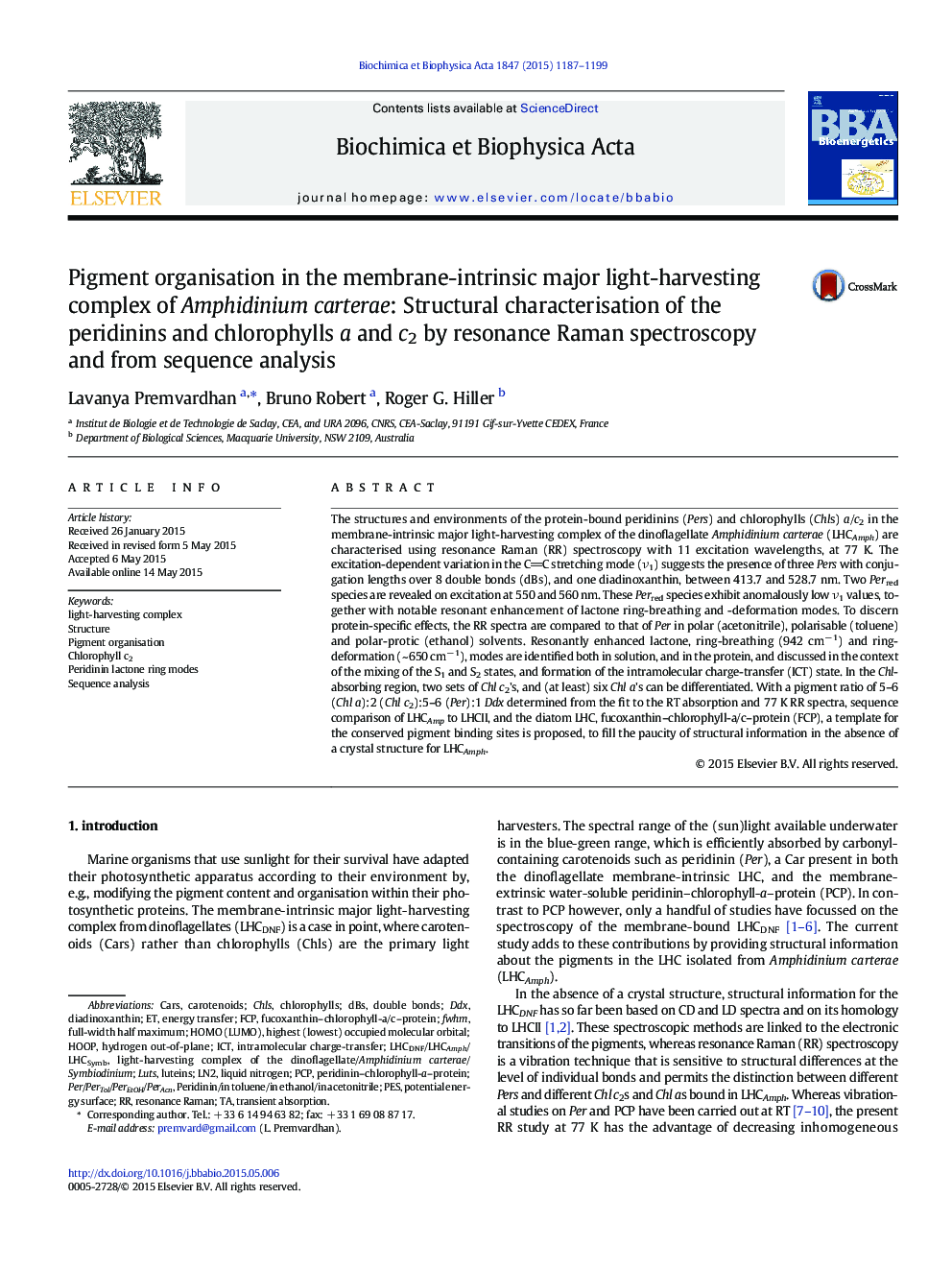| Article ID | Journal | Published Year | Pages | File Type |
|---|---|---|---|---|
| 10795334 | Biochimica et Biophysica Acta (BBA) - Bioenergetics | 2015 | 13 Pages |
Abstract
The structures and environments of the protein-bound peridinins (Pers) and chlorophylls (Chls) a/c2 in the membrane-intrinsic major light-harvesting complex of the dinoflagellate Amphidinium carterae (LHCAmph) are characterised using resonance Raman (RR) spectroscopy with 11 excitation wavelengths, at 77 K. The excitation-dependent variation in the CC stretching mode (ν1) suggests the presence of three Pers with conjugation lengths over 8 double bonds (dBs), and one diadinoxanthin, between 413.7 and 528.7 nm. Two Perred species are revealed on excitation at 550 and 560 nm. These Perred species exhibit anomalously low ν1 values, together with notable resonant enhancement of lactone ring-breathing and -deformation modes. To discern protein-specific effects, the RR spectra are compared to that of Per in polar (acetonitrile), polarisable (toluene) and polar-protic (ethanol) solvents. Resonantly enhanced lactone, ring-breathing (942 cmâ 1) and ring-deformation (~ 650 cmâ 1), modes are identified both in solution, and in the protein, and discussed in the context of the mixing of the S1 and S2 states, and formation of the intramolecular charge-transfer (ICT) state. In the Chl-absorbing region, two sets of Chl c2's, and (at least) six Chl a's can be differentiated. With a pigment ratio of 5-6 (Chl a):2 (Chl c2):5-6 (Per):1 Ddx determined from the fit to the RT absorption and 77 K RR spectra, sequence comparison of LHCAmp to LHCII, and the diatom LHC, fucoxanthin-chlorophyll-a/c-protein (FCP), a template for the conserved pigment binding sites is proposed, to fill the paucity of structural information in the absence of a crystal structure for LHCAmph.
Keywords
Related Topics
Life Sciences
Agricultural and Biological Sciences
Plant Science
Authors
Lavanya Premvardhan, Bruno Robert, Roger G. Hiller,
